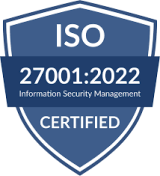A Chart of Accounts is a list of all the categories of accounts in a company or business, into which different transactions are recorded. The purpose of the Chart of Accounts is to help you categorize these transactions appropriately, especially for generating your financial reports.
The Chart of Accounts are of five major categories:
1. Assets (representing what the business owns or controls).
2. Liabilities (representing what the business owes or is responsible for).
3. Equity (representing the business's net worth or ownership interest).
4. Revenue (representing income generated from business activities).
5. Expenses (representing costs incurred to operate the business).
These categories provide a comprehensive framework for classifying and organizing accounts, ensuring that all financial transactions and events are properly recorded and reported. Upon signing up on Tyms, the basic accounts under the five categories are created for you, and you can create additional accounts to suit your business needs.
Here are the steps to create a Chart of Accounts on Tyms:
1. Navigate to the Accounting module from the modules list by the top left hand corner of the screen.
2. Click on the “New” button on the Chart of Accounts page, and select “Chart of Account”
3. The following fields are required to create accounts:
a. Account type: This is the type of account, which is one of the fundamental five accounts.
b. Account sub-type: A subtype of the account type. Ex: Other income as a subtype of Revenue, Fixed assets under Assets, Cost of Goods Sold under Expenses, amongst others.
c. Name: This is a descriptive name of the account. This name should clearly indicate the purpose or type of transactions that will be recorded in that account, making it easier to identify and classify transactions accurately.
d. Number: This is the unique code or number to each account, allowing for a well-organized and efficient numbering system.
e. Description: An explanation for the account, providing a clear understanding of the account's purpose and what transactions it will capture.
This description should be concise, yet descriptive enough to help users quickly identify the account's role in the financial reporting structure.
4. Check the box “Account has a parent account" if the account you're creating is a sub account or a subset of another account.
5. Select the parent account from the dropdown list, which will link the account you're creating to the existing parent account. This will establish a hierarchical relationship between the accounts, allowing for easier financial reporting and analysis.
6. Click on “Save",confirming the creation of the new account and making it available for use throughout the Tyms accounting software.
The “+” button by the side of each account subtype also opens up a sidebar to create account(s) under that specific subtype.
Managing Chart of Accounts on Tyms
The Chart of Accounts table contains four major columns:
Account: The name of the specific account.
Number: The unique account code or number assigned to the account.
Description: A brief description of the account's purpose or usage.
Balance: The closing balance of the account as of the specified period. This field displays the current balance of the account.
Clicking on the account name takes you to the ledger page for that specific account, where you can view all transactions that make up the balance and activity related to that account.
Managing Chart of Accounts on Tyms involves the following functions:
1. Editing or updating existing accounts.
2. Deleting accounts.
Editing or updating existing accounts
Tyms allows for limited editing of accounts to maintain data integrity and consistency. For auto-generated accounts, only the account code or number can be edited, while manually created or imported accounts allow editing of both the account code or number and descriptions.
To edit an account on Tyms, take the following steps:
1. Click on the pen-like icon at the right hand side of that particular account, and a form will be opened to you.
2. Edit the details of the account, such as description or account number.
Save the updates, and this will take effect.
Deleting accounts
On Tyms, deleting an account permanently removes all data associated with that account, making it nonexistent. However, this is only possible if the account has no records or transactions attached to it.
If the account has existing records or transactions, deletion is not allowed until those records are re-categorized or reassigned to another account. This ensures that financial data is not lost or orphaned, maintaining the integrity of your financial records.
To delete an account on Tyms:
Click on the red trash icon by the right hand side of the account, and confirm deletion.
The account will no longer be available for selection, and will not exist on the list of accounts.


